Technology
技術分享
Smart Device Communication Technologies
— Leo Hu, R&D Engineer at Innovation R&D Center, EPCO, CTCI
As technology continues to progress, video communication has become one of the main ways for enterprises to conduct meetings, collaborative work, and communication. For an international EPC contractor such as CTCI, its offices and project sites are located all over the world. Using mobile smart devices to conduct remote video communication in various work environments can bring many advantages and benefits. This article will talk about the various smart communication technologies and their application for CTCI’s construction sites, such as on-site inspection and supervision, company training, and technical support. Such applications help improve the skills and expertise of workers, achieve more efficient and safer construction management, ensure work progress and quality, and allow the construction sites to become safer and enjoy more economic benefits.
Technical Introduction
CTCI currently uses three types of smart communication devices, namely smart glasses, mobile phones with stabilizers, and action cameras.
Smart glasses
Smart glasses are a type of innovative smart devices that allows users to free their hands from holding cameras so that they can better do the necessary work on site. For engineering companies, smart glasses can facilitate smart construction management and monitoring. Real-time video calls through smart glasses allow construction managers to better monitor and manage on-site status, make real-time scheduling, and provide guidance. Such calls also make collaborative work possible by allowing construction personnel in different locations to have instant conversations and information sharing, which helps improve construction efficiency and communication.
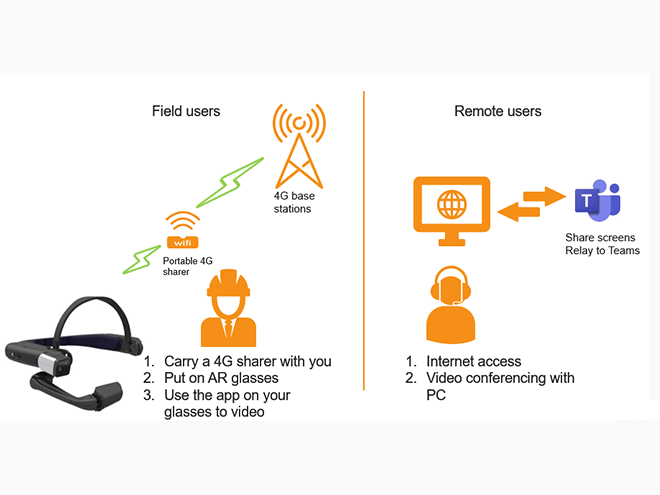
Architecture diagram of smart glasses
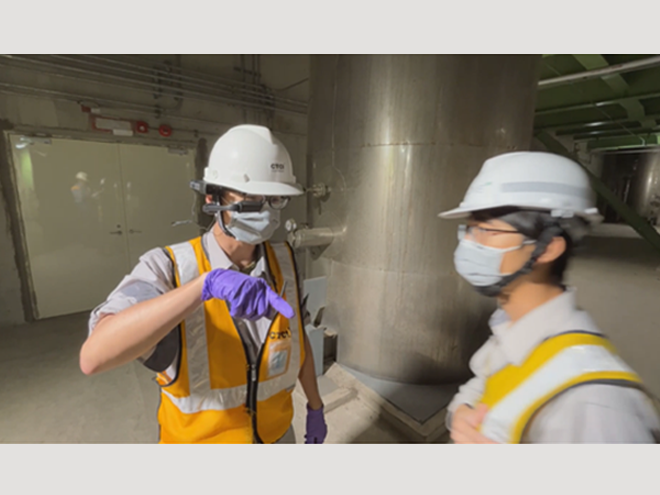
Equipment inspection scenario
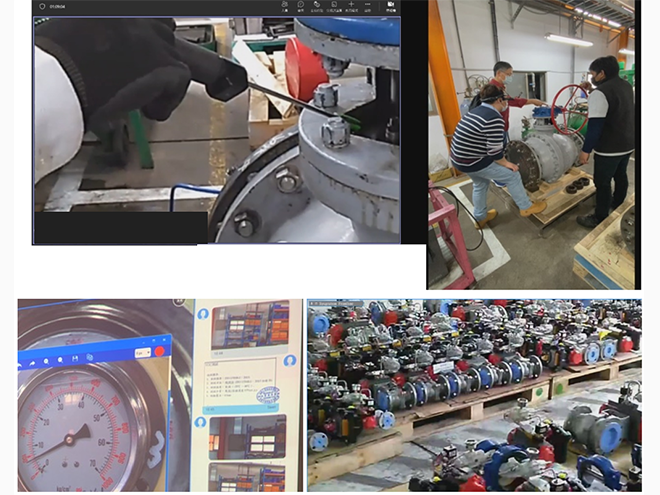
Factory test operation scenario
Mobile phones with stabilizers
Nowadays, thanks to the technological advances of mobile phones, mobile phones have become an indispensable part of people's lives. At construction sites, mobile phones can also be used as video devices. For example, the built-in lens of the mobile phone is used for making video calls and capturing real-time construction site images, so that the construction team can communicate and collaborate in a timely manner. In addition to the mobile phone, the handheld stabilizer is also an important auxiliary tool that can help the image-taker minimize camera vibration during the video call and take clearer and more stable images, so that the team can quickly understand what is going on onsite and make more accurate decisions. The handheld stabilizer also helps improve the image quality during on-site supervision and quality inspection, thus improving the work efficiency of supervisors and quality inspectors.
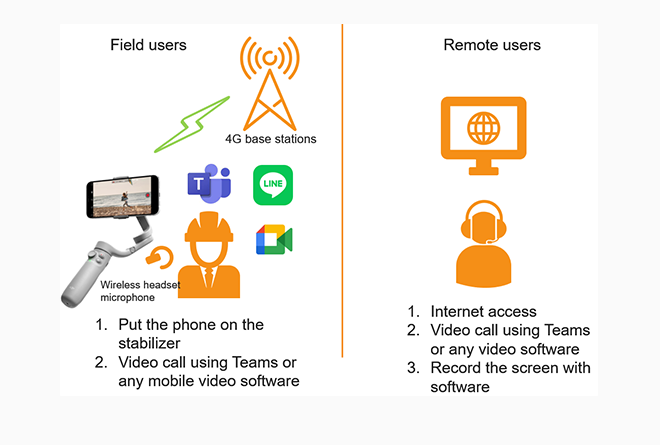
Architecture diagram of a phone with stabilizer

Recording the welding quality
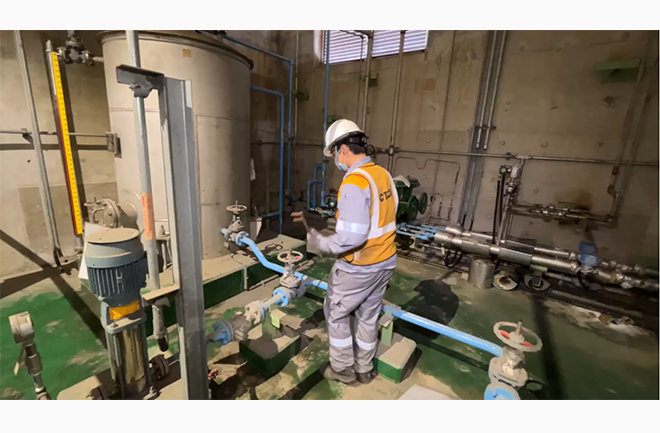
Facility troubleshooting
Action cameras
High-resolution action cameras allow users to capture many details of the construction site, which is very practical for quality monitoring and progress tracking. With excellent image stability, these cameras can overcome the vibrational and unstable environment at construction sites, as well as achieve 360-degree surround shooting through diversified applications of various camera models and accessories, allowing data collection to become more efficient. Durability is another advantage of action cameras, as they can withstand the harsh construction environment by being waterproof, dustproof, and shockproof. There are many aspects where action cameras can be applied at a construction site, such as joint site review, building structure inspection, safety monitoring, progress recording, and project acceptance. With continuous shooting mode, action cameras are particularly helpful for work at height, work in narrow space, and work in dangerous places, as it helps improve work efficiency and reduce safety risks. Action cameras are often used with accessories such as tripods and selfie sticks. With these accessories, action cameras have even more versatile functions, as cameras can either be fixed in the same position to ensure image capture stability, or can be inserted deep into the pipeline. With a dedicated smartphone app, users can monitor the conditions in real time through captured images, and make adjustments in time. Overall, action cameras are a valuable tool with extensive applications at the construction sites. It allows more comprehensive on-site data recording and collection, which in turn improves construction management.
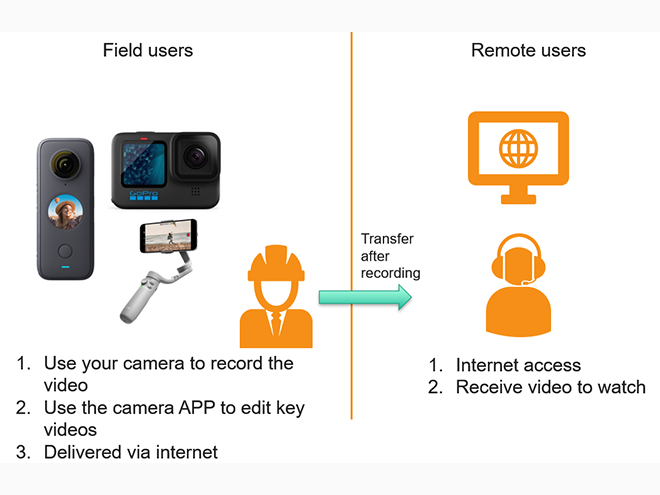
Architecture diagram of action cameras
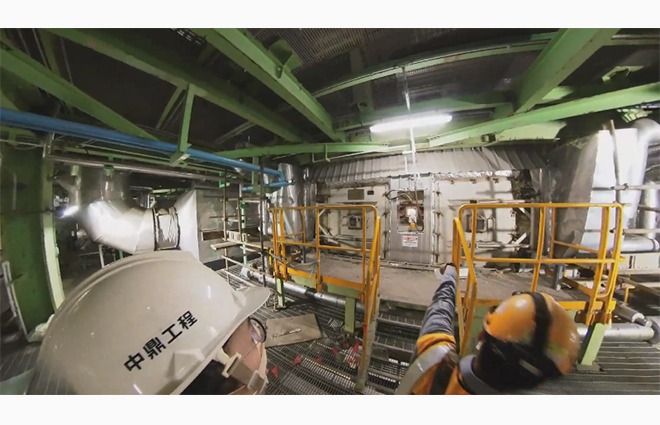
Joint site review
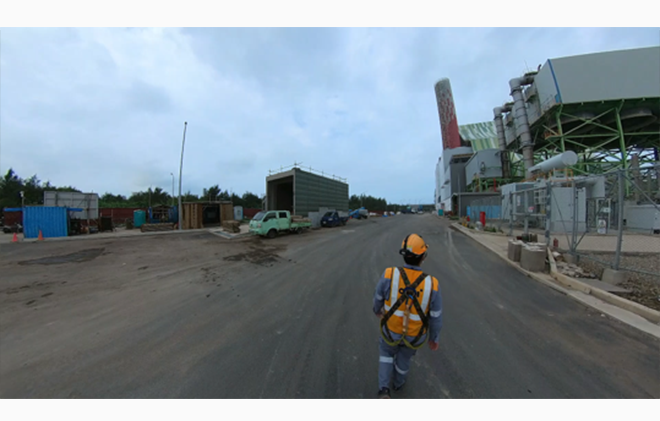
Recording the plant construction progress
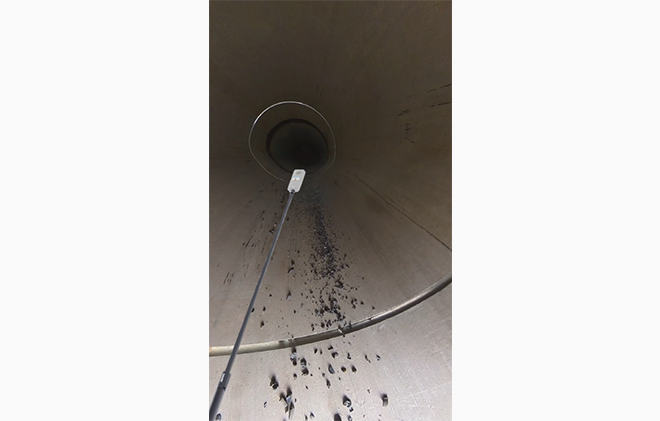
Capturing an interior image of a pipeline
Technical Advantages
There are a couple of advantages when it comes to smart device video technology: .Save time and transportation costs It takes a lot of time for the company staff to go to a construction site to work on a project. This is particularly true for construction sites overseas. By installing a smart video device at the jobsite, time can be used more efficiently, as staff can now save travel time and waiting time. .Improve communication efficiency Video communication through smart device allows parties at both ends to get closer to the construction site, which is beneficial for communication and exchange. Live footage transmission helps improve communication efficiency and transparency, while all discussions and documents can be conducted and processed online, so that everyone can understand and participate in discussions more quickly and accurately. .Protect the environment Video communication through smart device can help reduce the environmental impact by companies and employees because employees do not need to travel long distances, which helps cut carbon dioxide and other pollutant emissions. Video conference also helps reduce the use of paper use and other materials, making it more environmentally-friendly. .Make employee happier at work and increase their productivity Video communication through smart device brings more flexibility to employees at work. Employees can therefore avoid long commutes and outings, cut their stress and fatigue, which in turn increases job satisfaction and productivity, and helps reduce employee turnover. .Improve customer satisfaction Video communication through smart device allows companies to better collect on-site information, and can therefore help them address customer needs and issues more quickly, resulting in better customer experience. Video conferencing brings better communication and better cooperation, as well as higher customer satisfaction and stronger loyalty. Taken together, smart device video can bring many cost savings and benefits. Companies can increase their work efficiency, improve communication, increase flexibility, protect the environment, and make business more successful and sustainable.
Limitations and Challenges
Despite having many advantages and application values, smart device video technology does face some limitations and challenges. For example, video communication through smart device requires a stable network connection, which may be difficult to achieve at some construction sites. Some laws and owner's contracts also dictate specific data management and security protection to avoid data leak and loss, as well as protect privacy and data security. In terms of use, video communication through smart device requires proper training to ensure that every user at the construction site can adapt and know how to use such technology to improve construction efficiency and quality. Lastly, video communication through smart device cannot completely replace the actual operation and experience of technicians. Some operations and problems still need to be dealt with by specific personnel physically going to the site.
How to Make Proper Use of Smart Device Video Technology?
.Choose the right video software: There are many different types of software and platforms for video communication through smart device. Common video software includes Teams, Skype, Google Meet, and Zoom. .Plan and schedule ahead: Before using a smart device for video conference, one should plan and schedule in advance to ensure that the meeting runs smoothly. For example, send invitations in advance, confirm participants, conduct training, test the equipment and network connectivity, etc. .Ensure good video quality: Good video quality is the key to a smooth video conference on smart devices. Ensure that all participants have proper devices and enough network bandwidths. .Manage data and files properly: All video archives should be properly managed and protected to prevent the loss, damage, or theft of captured videos. For example, one can encrypt the files, run regular backups, and make archives. .Establish a good video work culture: Video communication through smart device requires employees to work in a video environment, and a good culture of video use should be established to provide the necessary support and training to ensure that employees can smoothly adapt to this way of working.
Conclusion
From the cases shared above, it can be seen that for engineering companies, selecting suitable smart communication devices according to user needs can not only bring many advantages, save costs, but also provide customers with better products and services, thus generating considerable benefits.
